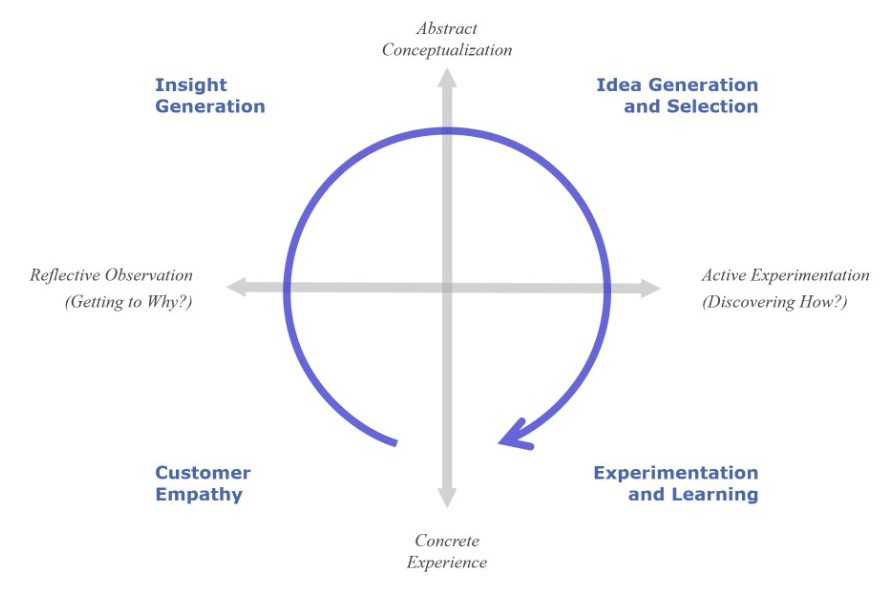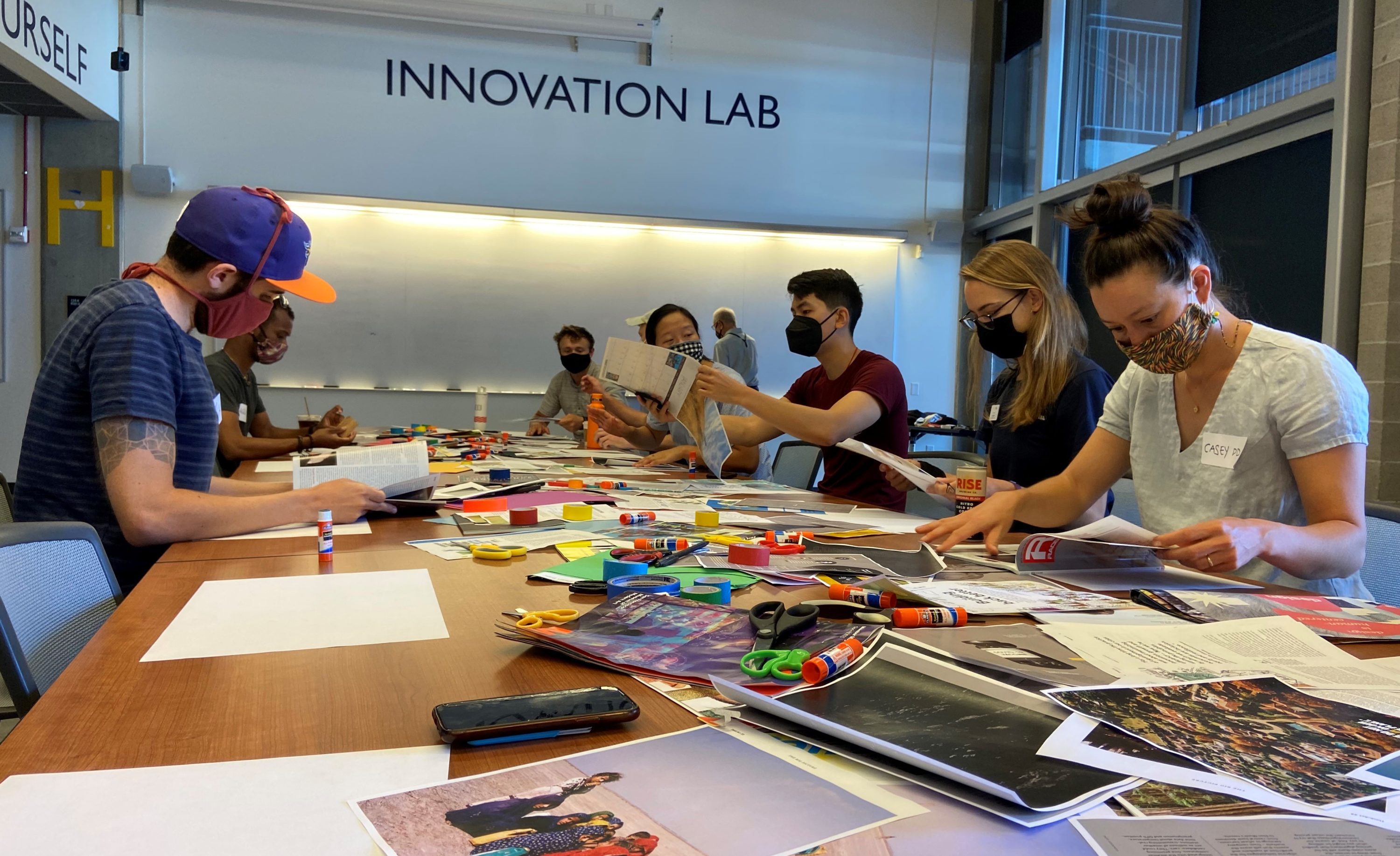Course Spotlight: UGBA190C, Collaborative Innovation
UGBA 190C, “Collaborative Innovation” is a multidimensional course co-taught by three lecturers from respective professional fields. Sara Beckman, PhD, Haas School of Business, leads the business module; Anibel Ferus-Comelo, PhD, (Goldman School of Public Policy & UCB Labor Center), leads the public policy module; and Lisa Wymore, MFA, (Theater, Dance and Performance Studies & Faculty Advisor for Berkeley Arts + Design), leads the theater, dance, and performance module.
As the class title suggests, this course is about collaboration and innovation. Its difference with other typical Haas courses lies in the wide range of perspectives and practical approaches it provides. Guided by a team of faculty from public policy, business, and theater, dance and performance studies, students get to approach framing, solving problems and leveraging opportunities from the perspectives of the three disciplines. At the same time, we can identify our own values and appreciate the diversity of our teams.
Business Module: Collaborative Innovation through Business Lens
In the business module, which occupied our first two weeks of classes, we learned about teaming, observation, problem-framing, divergent and convergent thinking, and iterative solution testing. Here, the innovation cycle we utilize during the whole semester was also introduced. To apply the innovation cycle to real world problem recognition and strategy design, we were each placed into a group that corresponded to a local company. Then, we were asked to develop the business plan for the company step by step.

For example, I was in the team of Cityface, a skincare company founded by a Haas student, Jeena Chong, with three other teammates, all from different academic and cultural backgrounds. We generated insights through design empathy and reflective observation, paying attention to our own and other people’s skincare routine, as well as conducting secondary online research. From there, we built a customer persona that identified the deeper needs and wants and jobs to be done of different target audiences. Later on, we reframed the problems using tools such as business model canvas. We also generated ideas through diverge-and-converge technique, experimented our ideas through Riskiest Assumption Test, and delivered them with compelling narratives.

Theater, Dance and Performance Module: Collaborative Innovation through Movement and Creative Thinking Lens
In the following two weeks, we were put into a whole different mindset where body language was highly involved in the collaboration and innovation process. We were tasked with communicating our ideas in more diverse and creative ways to motivate change. The first assignment of this module was rather interesting. It was a 2-hour outside of classroom engagement. We started by sitting quietly or doing some light stretches. As we did this physical preparation, we asked ourselves, “What makes me uniquely me at this moment in my life?” Then, we individually went out for a walk in our neighborhood with awakened senses, during which we each picked up 1-4 objects from the environment that we were drawn to even without knowing why. As we connected ourselves to the surroundings, we always returned to our original intention: what makes me uniquely me at this moment in my life?

Sounds abstract and pointless, doesn’t it? But, this practice was meant to be sentimental rather than rational. In class, we practiced opening our senses to the objects and told stories of the objects with SCAMPER techniques. We, again, formed teams to create a short performance based on the objects we collected. The performance required some elements of movement, some elements using words (written, spoken, drawn), and combination of any props or objects that supported our story. Our team eventually came up with an immersive theatre display presenting the transformation of a mannequin into a human. While having fun brainstorming the crazy ideas, we gained practical experience in how to engage movement and creative thinking into collaboration and innovation.

Public Policy Module: Collaborative Innovation through Public Policy Lens
The public policy module was my favorite. Here, we dealt with more structural and systematic problems that have great impacts on society. In addition, the class was both engaging and efficient. The class emphasized on understanding public policy through exploration and interaction, instead of feeding us all the needed information. For example, at the first class of this two-week module, Professor Anibel led an activity where the groups could bid on a $20 dollar bill with unlimited budget. There were several other rewards and penalties, but in short, it turned out to be a really intense competition. Many groups were willing to bid up to $100 for that $20 bill, since we were driven by the sense of accomplishment and the high pressure of penalties. After discussing the outcome of our bid and its connection to the real world public policy system, Professor Anibel commented, “It was a great discussion, but all of you’ve been missing the most important thing. I told you to bid, yet I never said you cannot cooperate between groups.”
It wasasudden shock and shame to me – how come I’d never thought of it? We are too often stuck in the frame of competition, but to make more significant progress, we need to break the competition mindset and learn to cooperate with different groups of people. Similar approaches were made in the rest of the module. We did another fun role play exercise called “Fishbowl.” In Fishbowl observation, while some students are portraying the assigned roles, other students observe and analyze the behaviors. In our case, the portraying team of 4-5 students would repeat their short skit of a real life problem in front of the observing team. The observers could interrupt the skit at any point by tapping on the person he or she wanted to substitute. Then, that interrupter could carry on the role to make changes to the situation.
It was not an easy task to improve the situation. Not long after several attempts, one would realize the problem often involved a more systematic issue, and it was nearly impossible to alter the whole situation merely with one person’s effort. Therefore, at the second stage of the Fishbowl exercise, we were allowed to take over more than one role at multiple points to see what would happen. The skit would be repeated over and over until we came to a satisfactory solution. With this activity, we were more likely to gain empathy toward different roles and see the whole picture and power relationship within.

Final Project Team Launch: Collaborate and Innovate with the Real Life ‘Frontline’ Organizations
The second half of the semester requires all of us to apply the acquired tools and knowledge to real world problems. A collective of organizations with various thematic intersections, such as climate change, labor justice, or tech and data, was happy to cooperate with us, and we could choose the organizations and problems we would like to work with based on our personal interest and expertise. I have always been interested in climate justice, thus I chose to work with North Bay of Jobs and Justice on equity and workers’ rights in climate adaptation.
By communicating and working directly with the frontline organizations, we not only gained valuable experience but were also deeply inspired by the effort they’ve put in improving the lives of those in need. While appreciating a diversity of innovation techniques, we had to understand why and how different disciplines use different techniques. Moreover, we learned to engage effectively in collaborative innovation with people from different ethnic, disciplinary, gender, or generational backgrounds and institutional experience. The most essential key to collaboration, I believe, is to build trust with your partners to achieve the shared goals.


